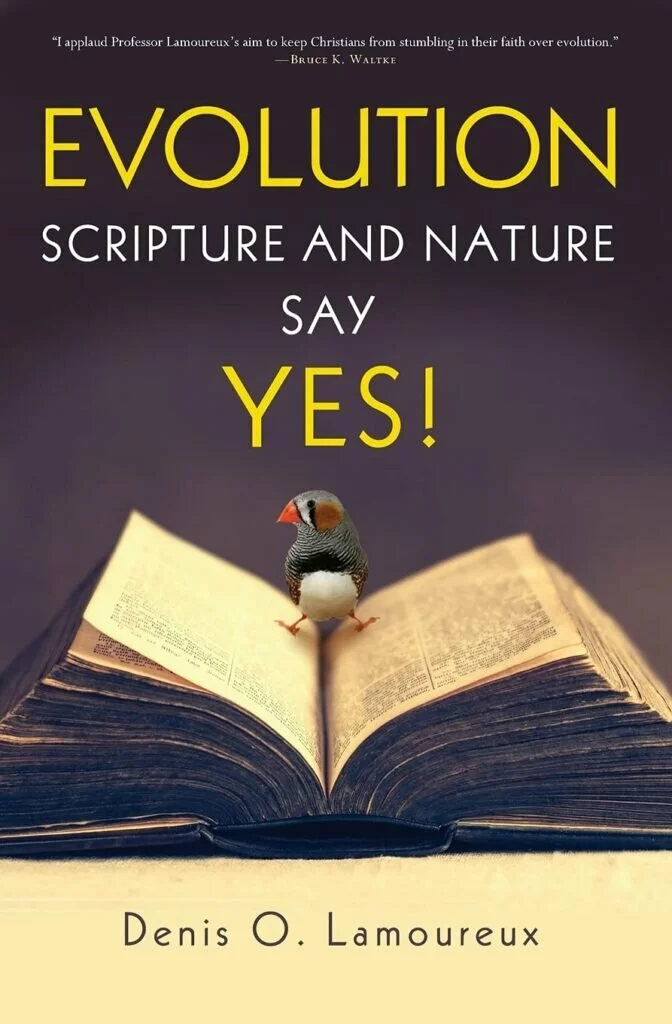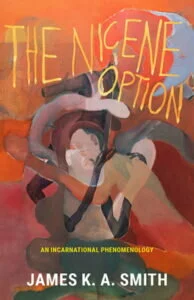American evangelicals have come a long way. Since the last century, they have tried to bear witness to their Savior in an increasingly post-Christian culture.
Distancing themselves from the abrasive and isolationist style of early fundamentalism, and embarrassed by the anti-intellectualism of that heritage, scholars at institutions like Wheaton, Trinity, and Fuller were gradually able to cultivate a winsome Christian mind. And yet today, in spite of those gains, commentators warn that evangelicals are losing cultural credibility. Limiting our discussion only to the natural sciences, these are troubling times indeed for the grandchildren of Carl Henry and Billy Graham. People wring their hands over the politicization of evolution in schools in North America, and they mourn those distrustful believers who vilify rather than understand Darwin. And behind these trends, indeed fueling them, is the “Warfare” narrative, the myth of an intransigent, permanent conflict between Scripture and science.
We instantly recognize these concerns, even if we have fundamental disagreements on how to characterize the problem itself let alone offer any viable solutions. What might all this portend? Is there no way to have a high reverence for Scripture but also embrace the best insights of modern science? A number of evangelicals think there is a way forward, a way for the lamb of creationism to lie down with the lion of evolution.I’ve intentionally limited the focus of this review to North American evangelicals as they are Lamoureux’s intended audience. This movement is gaining steam, funds are pouring in, new books are being published every month. For the record, I am one of the nay-sayers—while I think the academic dialogue between scientists and theologians from across the spectrum is immensely important, I am pessimistic about current efforts at reinterpreting the received doctrinal tradition.
Lamoureux’s “Complementary” Approach
Denis Lamoureux is among those evangelicals who are more optimistic, and his new book, Evolution: Scripture and Nature Say Yes, is an excellent example of such an approach. And if anyone knows what he is talking about, it is Dr. Dr. Dr. Lamoureux—I do not lie, he holds doctorates in dentistry, theology, and biology. As a young man he was a zealous young-earth creationist, but after intense intellectual struggle he settled on “evolutionary creationism” (or “theistic evolution,” though he dislikes that term). In this book, as with his earlier publications, he argues for an unabashed biblical Christianity and an unapologetic embrace of mainstream evolutionary theory. While rich in concepts and their implications, the book itself is geared to college students and other lay believers who wrestle with these questions.
The gist of his argument is that most evangelicals are trapped in “either/or” binaries: science or religion, evolution or the Bible, and similar dichotomies that prevent clear thinking. Instead, we should recognize that science and religion address separate but complementary spheres of reality. Doctrinal claims about “creation” are religious beliefs that tell us who made the world, “evolution” is a scientific theory telling us how that world was made. In other words, God used evolution as his means of creating the world. Christians who balk at this conclusion typically assume “scientific concordism,” the idea that genuine scientific facts are corroborated in the Bible. But they’re wrong, says Lamoureux—Scripture is an ancient text that, throughout, reflects the pre-scientific worldview of the cultures it was written in, assumptions that extend to geography (e.g., the earth is flat and immovable), astronomy (e.g., the sun moves, the earth is surrounded by a solid dome), and biology (e.g., the mustard seed is the smallest seed, only women cause infertility). God has graciously stooped down to humanity, accommodating himself, preeminently in Jesus’s incarnation but also in his inspired Word, thereby allowing the original readers (or hearers) to understand his revelation. In reading those same passages today, however, we must cling to the inerrant spiritual truths that the Lord is teaching while discarding the vehicle through which they are communicated, i.e., the biblical authors’ ancient and fallible understanding of nature (only the former are absolute truths, the latter are incidental). Lamoureux wants to liberate evangelicals “to embrace evolution as the Lord’s creative process for making all plants and animals, including men and women” (p.154).
There is much to like about this book. It is very personal, brimming with anecdotes and autobiographical insights. While Lamoureux is working with very important concepts and ideas, his prose is always easy to follow. As a gifted communicator, he has a knack for finding the telling illustration (academics can learn good pedagogy from this little book). For readers who have a very negative view of evolutionary creationists, many of those stereotypes collapse in these chapters—for example, Lamoureux clearly has a warm and evangelical faith. He is charitable in how he represents individuals who hold views he disagrees with (e.g., see his comments about Hugh Ross and Ken Ham on p.117 and p.118, respectively). Christians who have struggled with science-faith questions and have considered abandoning the faith may well find this book a life saver; it provides them categories to reconcile their faith with evolutionary science. That is no small thing.
The Problem with Dualism
But, at what cost? The question needs asking, if reluctantly. Lamoureux’s argument ultimately fails, and it is instructive to see why. This book presents an exceedingly rosy picture of evolution. What becomes of God’s goodness given the sheer magnitude of death entailed by evolution, nature red in tooth and claw over millions of years, all the countless species that have died and become extinct? Lamoureux never wrestles with this problem of evil facing evolutionary creationism (so-called theodicy; he hints at it on pp.162-63, 165-66).For different attempts to engage this dilemma, see Christopher Southgate, The Groaning of Creation: God, Evolution, and the Problem of Evil (Louisville: Westminster John Knox, 2008) and Michael Murray, Nature Red in Tooth and Claw: Theism and the Problem of Animal Suffering (Oxford: Oxford University Press, 2008). Instead, he almost always emphasizes what is most beautiful and exciting about evolution, how it all resonates with Christianity. His presentation is imbalanced.
My main worry, however, is that Lamoureux’s thesis suffers from fundamentally dualistic notions of Scripture.I leave to the side more minor complaints, e.g., Lamoureux claims that “ID theorists reject biological evolution” (p.53, repeating the claim on pp.63, 163, and 172), even though Michael Behe—whose views are discussed in this book—is an evolutionary creationist who endorses common descent! Whatever one might think of the movement, we ought to recognize that its adherents include young-earth and old-earth creationists, evolutionists, and atheists. The real point of contention here is that Behe, unlike Lamoureux, thinks intelligent design is empirically (that is, scientifically) detectable within evolutionary creation. He exhorts us repeatedly that Scripture and science address different, complementary aspects of reality—“Scripture reveals spiritual truths concerning our Creator, his creation, and us”; it addresses “who created the world,” whereas nature reveals “how he created it” (p.15). Again, he writes, “The Book of God’s Words reveals spiritual truths. The Book of God’s Works offers scientific facts. The Bible tells us who created and science shows how he created” (p.181, see also p.121). This hermeneutical strategy compartmentalizes science and Scripture, so there can be no conflict between them. It’s no different conceptually from Stephen Jay Gould’s NOMA principle in which science and religion are segregated to different modes of inquiry.“NOMA,” for “non-overlapping magisteria”—cf. Stephen Jay Gould, Rock of Ages: Science and Religion and the Fullness of Life (New York: Ballantine, 1999). Lamoureux seems to think that this “complementarity” model is the only viable way to relate science and Scripture. I agree it has much to commend it but it cannot be the whole story. The Bible resists such an exclusive division of labor; too many biblical examples include both the “who” and the “how.” Complementarity fails when applied exhaustively.
The dualism comes into sharper focus as we consider “scientific concordism,” a concept he uses to describe the approach of Christians he disagrees with. But it is a blunt conceptual tool that lacks nuance. The shoe likely fits for some young-earth creationists, but many other Christians (including young-earth creationists) would sympathize with Lamoureux’s criticisms of scientific concordism and yet reject his exclusive complementarity stance. There are many ways of expressing “concord” between Scripture and science (some more minimal than others). It would have been helpful to see if—and why—Lamoureux endorses any kind of concord between Scripture and the world we live in (as I suggest below, he does but ambiguously). In any case, his critique of scientific concordism needs more nuance, the absence of which rendered his arguments somewhat hollow. I regret to say that his book is a classic example of what happens when the ancient (and legitimate!) idea of “accommodation” is co-opted into the service of a post-Enlightenment, rationalistic agenda.As Arnold Huijgen puts it in Divine Accommodation in John Calvin’s Theology: Analysis and Assessment (Göttingen: Vandenhoeck and Ruprecht, 2011), 375, “the idea of accommodation does not seem helpful in the question of the relation between theology and science. As it functioned in the 17th century discussions, it has shown to be an ever regressive principle, which opened the way for a thoroughly rationalist understanding of Scripture. For once applied, there seems no limit to the application of the accommodation principle. … So, when the accommodation principle was used in a defensive way against the natural sciences, it showed an ever regressive nature to retract to safer grounds once natural science claimed another area of reality.”
How Far Will Scripture Bend?
But the problems run deeper still. His central argument is that much of Scripture reflects ancient, mistaken views of nature, views which God accommodated as he revealed inerrant spiritual truths. According to Lamoureux, a wide range of scriptural texts actually endorse the biblical authors’ mistaken scientific assumptions. While I found myself disagreeing with much of his exegesis,To pick one or two examples, his exegesis of Matt 4:8-9 and Rev 1:7 struck me as naively modern (p.96); I had similar concerns when he faults Leviticus 11 for categorizing bats as “birds” instead of mammals (p.103), but the Hebrew word simply means “flying creature”—where’s the problem? Lamoureux’s exegetical approach consistently fails to distinguish observational language from models of cosmology; he disavows the distinction, but I think Scripture usually implies the former over the latter. what was most ironic is that Lamoureux’s own approach is limited by his precommitments to the modern view of the world (a mirror image of the mistake he discerns in scientific concordism). He faults anti-evolutionists for reading modern scientific ideas into the biblical text, but his alternative solution merely eliminates large swaths of Scripture when he thinks they do not measure up to his scientific understanding. That is why he relegates everything “unscientific” to “ancient science”; our contemporary context determines what he can and cannot accept in God’s Word. He separates spiritual truths in Scripture from their allegedly outdated scientific casing so that he can embrace all the findings of modern science—e.g., “As Christians, we can proclaim that Jesus is the Lord of our 13.8-billion-year-old universe. Therefore, as science advances, every amazing discovery in nature can be viewed in the light of God’s lordship over his creation, including all the discoveries from the evolutionary sciences” (p.91). One should not be surprised when such methodological assumptions lead him, for example, to deny that Adam and Eve ever existed and to dismiss the apostle Paul’s views about Adam because it is “ancient science” (e.g., Rom 5; 1 Cor 15).
In fairness, Lamoureux does make exceptions for passages “involving the attributes of God (1 John 4:16), his moral commandments (Matt. 22:37-39), or practices in the church such as communion (1 Cor. 11:23-26)” (pp.88-89, see further helpful caveats on p.120). I am relieved that he offers these qualifications, but I don’t know that he has the grounds to do so. For instance, I am unclear why he does not have a section on “Ancient Religion” and then argue, in similar fashion, that God was accommodating his message to their incidental views on miracles, deities, spirits, and the like. His principle of separating Scripture’s inerrant spiritual truths from its outdated scientific worldview is a universal acid that never stops corroding. I can’t help hearing echoes of Adolf von Harnack who, at the turn of the twentieth century, urged Christians to extract the kernel of Jesus’ essential teaching from the husks of incidental beliefs that moderns no longer accept.Cf. Adolf von Harnack, What is Christianity?, trans. T. B. Saunders (New York: Harper & Brothers, 1957). Despite key differences—Harnack discards the gospel miracles; Lamoureux junks “ancient science”—the methodological parallels are striking: “The ancient science in Scripture,” writes Lamoureux, “is essential for transporting spiritual truths. It acts like a cup that holds water. Whether a cup is made of glass, plastic, or metal is incidental. What matters is that a vessel is needed to bring water to a thirsty person” (p.90).
This small book has big ideas. In light of ongoing dialogue among Christians about the intersection of science and theology, this book represents Lamoureux’s call to end all wars between the two disciplines. He is not tilting at windmills and he’s right to remind us that all Christians prior to the Enlightenment accepted geocentrism as a sure deliverance of Scripture. Galileo prompted us to be more hermeneutically circumspect with the Bible. Lamoureux’s book is engaging those same questions in the context of our own post-Darwinian intellectual setting, and for that we can be grateful. But from one Doc to another, the cure is far worse than the disease. I can prescribe better hermeneutical medicine.








Comments
Be the first one to make a comment!